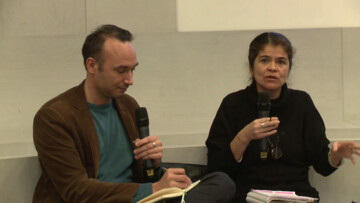There is a famous exclusion of the dead from political community (assigning them a radically deconstituted status) in Thomas Jefferson’s correspondence with James Madison – shortly after the framing of the federal USA constitution: “I set out on this ground, which I suppose to be self evident, ’that the earth belongs in usufruct to the living’: that the dead have neither powers nor rights over it. […] The earth belongs always to the living generation.” The figure of the “crowd of the dead” from Gaelic (“Slúagh na marbh”) and other traditions (fleetingly referenced by Elias Canetti in Crowds and Power) is contrasted with this exclusion. The crowd of the dead figures a form of material ancestral co-being coming into proximity to the living not as revenant nor as shade nor as spectre, but as stuff, as thingly force congealing materially, as mist, smoke, a sudden glooming in the weather, a seething mass of insects, a wheeling flock of birds, or as some other abruption in the material textures of the world. This is also related to the more-than-human dead as figured in the radically posthumanist (and antihumanist) perspectives of some recent scholars (da Silva; Domanska). As Ewa Domanska notes: “While dehumanisation in the symbolic world of culture denotes exclusion from the dominant, human collective, in an organic multispecies environment it means inclusion into a much broader collective of beings, of which only some are post-human in the sense that they were once human.” The question of how a political imaginary “community with/of the dead” might unfold in the wake of colonial-modernity (in non-Fascist terms) might be produced by working with these terms. What happens when we gather with these different possible constituencies of the dead? What happens when we think the theme of constituent power through, with, and among these ever-thickening crowds of the dead?


